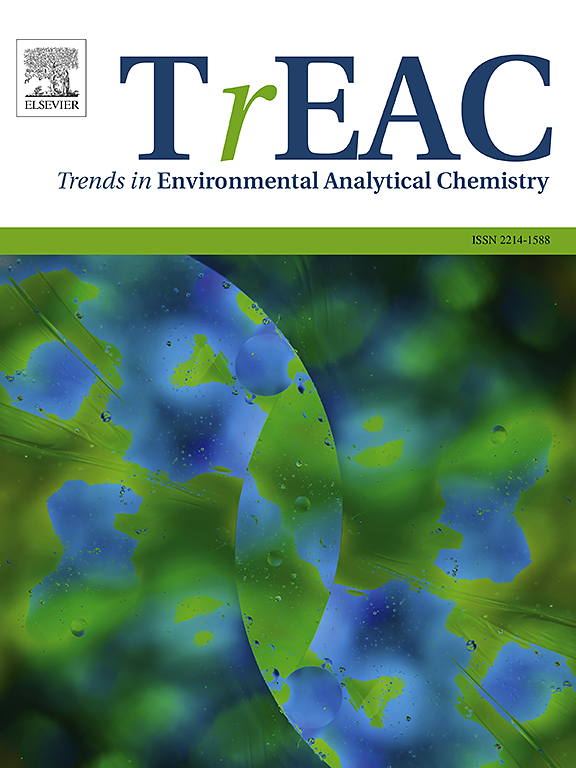Advancing environmental toxicology: The role of mass spectrometry imaging
IF 13.4
2区 化学
Q1 CHEMISTRY, ANALYTICAL
引用次数: 0
Abstract
The growing global concern over pollution and its substantial effects on ecosystems and human health has emphasized the critical need for a deeper chemical understanding of our environment. Consequently, there is an urgent need to enhance risk assessment, prompting a focus on advanced analytical techniques. Mass Spectrometry Imaging (MSI) is emerging as a prominent tool in this arena since MSI not only maps the spatial biodistribution of pollutants and their transformation products in tissues of living organisms but also gives information on how these pollutants alter the distribution of various molecules within the tissues. This review aims to provide insights into the potential role of MSI in environmental toxicology by first exploring the versatility of the most relevant MSI techniques in revealing the spatial distribution of pollutants and endogenous biomolecules. Also, the current applications of MSI in environmental studies in addition to a critical evaluation of the future perspectives of MSI in the field are discussed. Overall, despite current limitations, MSI shows substantial promise in enhancing risk assessment, and contributes to the increasing adoption of spatial biology in environmental studies.
推进环境毒理学:质谱成像的作用
全球对污染及其对生态系统和人类健康的重大影响的日益关注,强调了对我们的环境有更深入的化学认识的迫切需要。因此,迫切需要加强风险评估,促使人们关注先进的分析技术。质谱成像(MSI)正在成为这一领域的重要工具,因为MSI不仅绘制了污染物及其转化产物在生物体组织中的空间生物分布,而且还提供了这些污染物如何改变组织内各种分子分布的信息。本综述旨在通过首先探索最相关的MSI技术在揭示污染物和内源性生物分子的空间分布方面的多功能性,来深入了解MSI在环境毒理学中的潜在作用。此外,本文还讨论了MSI在环境研究中的当前应用,以及对该领域MSI未来前景的关键评估。总体而言,尽管目前存在局限性,但MSI在加强风险评估方面显示出巨大的希望,并有助于空间生物学在环境研究中的应用。
本文章由计算机程序翻译,如有差异,请以英文原文为准。
求助全文
约1分钟内获得全文
求助全文
来源期刊

Trends in Environmental Analytical Chemistry
Chemistry-Analytical Chemistry
CiteScore
21.20
自引率
2.70%
发文量
34
审稿时长
44 days
期刊介绍:
Trends in Environmental Analytical Chemistry is an authoritative journal that focuses on the dynamic field of environmental analytical chemistry. It aims to deliver concise yet insightful overviews of the latest advancements in this field. By acquiring high-quality chemical data and effectively interpreting it, we can deepen our understanding of the environment. TrEAC is committed to keeping up with the fast-paced nature of environmental analytical chemistry by providing timely coverage of innovative analytical methods used in studying environmentally relevant substances and addressing related issues.
 求助内容:
求助内容: 应助结果提醒方式:
应助结果提醒方式:


